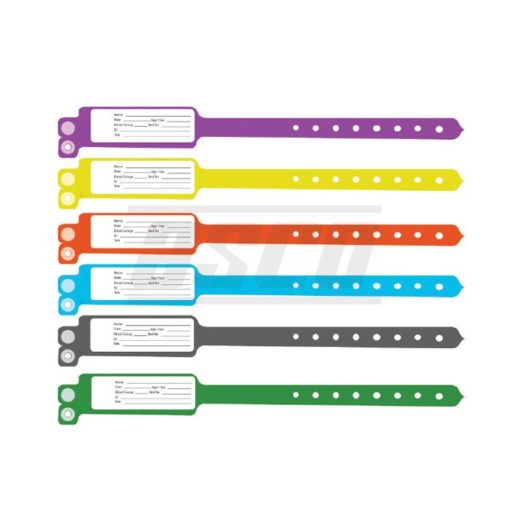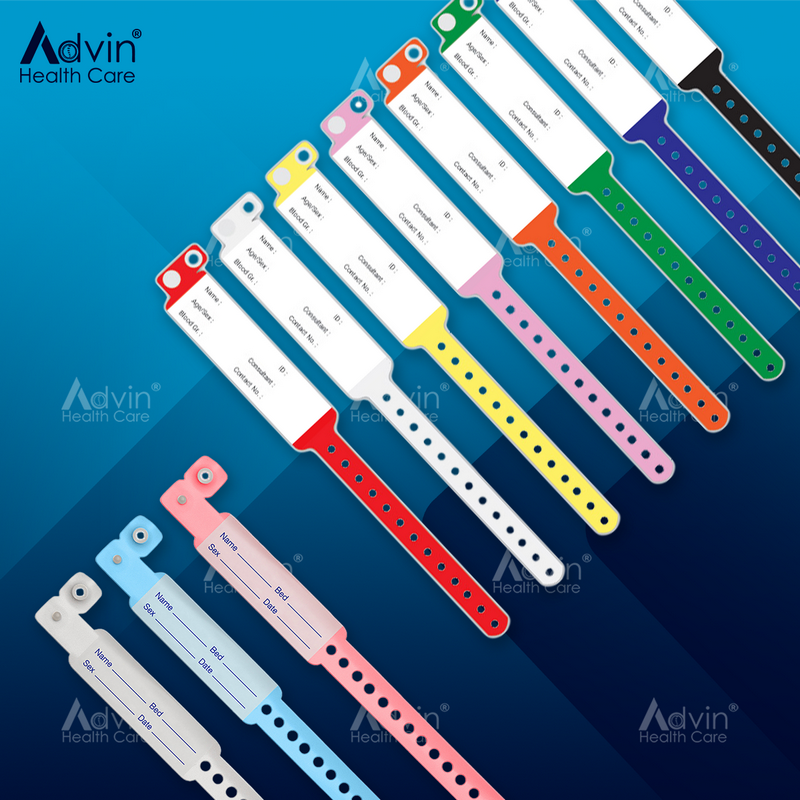The Role of Patient Identification Band in Improving Hospital Operations
The Role of Patient Identification Band in Improving Hospital Operations
Blog Article
Exploring the Different Kinds Of Patient Identification Band Utilized in Medical Facilities
In the elaborate world of healthcare, the important duty of Patient Identification bands typically goes undetected. These bands, differing from basic paper wristbands to advanced RFID bands, develop the foundation of Patient safety protocols, making certain accuracy in Patient Identification.
Understanding the Significance of Patient Identification Bands
While they might appear like plain accessories, Patient Identification bands play a vital function in medical centers. These bands serve as a critical device for confirming Patient identity, avoiding clinical errors connected to misidentification. Patient Identification bands also help in enhancing administrative tasks, making certain accurate record-keeping and billing.
Standard Paper Wristbands: Their Use and Limitations
Conventional paper wristbands have actually been a staple in Patient Identification throughout various clinical centers. While their usage prevails, they nurture certain constraints that may affect their efficiency in Patient management. This section will certainly focus on the scope of their application and the integral drawbacks connected with their use.
Paper Wristbands: Use Range
In the world of Patient Identification, paper wristbands have actually long held a crucial duty. These bands are commonly utilized in outpatient setups, where the Patient's stay is temporary. The wristbands consist of vital information such as the Patient's name, day of birth, and a special Identification number. This straightforward, yet efficient system, allows medical specialists to rapidly and precisely determine clients, ensuring the correct treatment is provided. Paper wristbands are also utilized in emergency circumstances, where quick Identification is paramount. Their usage includes occasions like blood contribution drives and mass vaccination programs, better emphasizing their convenience. Regardless of improvements in technology, the humble paper wristband stays a dependable and cost-efficient service for Patient Identification in numerous healthcare situations.
Limitations of Paper Wristbands
Regardless of their extensive usage, paper wristbands are not without their drawbacks. In addition, paper wristbands often do not have the technical abilities of more modern alternatives, such as barcoding or RFID chips, limiting their functionality to merely presenting composed information. Paper wristbands can trigger pain or skin irritability to some patients, especially when used for prolonged periods.
Barcoded Wristbands: Innovations in Patient Identification
While Patient Identification has long been a critical facet of healthcare, the development of barcoded wristbands symbolizes a substantial jump forward. These bands leverage the simpleness of barcoding innovation, permitting Patient info to be promptly scanned and accessed. They enhance the speed and precision of Patient Identification, minimizing the risk of clinical mistakes connected to misidentification. Barcoded wristbands are cost-effective, very easy to generate, and eliminate handwriting mistakes usual with hands-on systems. However, they are not without limitations. While they provide enhancements over traditional bands, the barcode can come to be smudged or used, providing it unreadable. In spite of this, barcoded wristbands continue to be a crucial device in modern medical care settings, representing the intersection of innovation and Patient treatment.
Superhigh Frequency Identification (RFID) Bands: an Action In The Direction Of Futuristic Healthcare
The evolution of Patient Identification bands has caused the emergence of Radio Regularity Identification (RFID) Bands (patient identification band). These innovative gadgets existing vital benefits for internet medical care facilities, providing a much more effective and technically advanced methods of Patient Identification. The implementation of RFID in medical care is a considerable step towards a more advanced technique to Patient monitoring and safety and security
Comprehending RFID Bands

RFID Bands: Key Benefits
Accepting official website a future where innovation and healthcare combine, radio regularity Identification bands offer a number of key advantages. Largely, these bands boost Patient safety and security by supplying accurate, immediate Identification, therefore decreasing medical mistakes. RFID bands can store a huge amount of Patient information, including case history and allergic reactions, enabling customized care. They likewise improve administrative jobs, as the automated data entry changes manual processes, enhancing efficiency and lowering documents. Additionally, RFID bands offer real-time monitoring of patients, critical in risky atmospheres such as surgical treatment or extensive treatment. These bands are resistant and durable to ecological factors, ensuring consistent functionality. Generally, RFID bands represent a significant development in Patient Identification technology, benefiting both clients and health care service providers.
Carrying Out RFID in Healthcare
These bands provide a seamless means to track and recognize individuals, ensuring their safety and boosting effectiveness in treatment procedures. RFID bands minimize clinical mistakes by providing exact Patient Identification, which is essential in preventing misdiagnosis or incorrect medication management. Hence, the execution of RFID bands is a substantial action in the direction of improving Patient safety and medical care delivery.

Color-Coded Wristbands: Aiding in Quick and Accurate Medical Diagnosis
In the dynamic environment of a clinical facility, color-coded wristbands have emerged as essential devices for swift and exact Identification of a patient's clinical condition. These wristbands, put on by individuals, bring specific colors that correspond to various clinical problems or standings. This system is made to supply instant aesthetic cues to healthcare companies, enhancing Patient safety and care top quality.
Techniques for Reliable Execution and Monitoring of Patient ID Bands
Achieving optimal use of Patient Identification bands requires a well-structured method for their execution and monitoring. Patient education and learning is likewise crucial; patients need to understand the objective of the bands and the demand for their constant wear. It's crucial to have a back-up strategy in area, such as barcode scanning or biometrics, to guarantee that Patient Identification is never compromised.
Final thought
Patient Identification bands are critical in medical facilities to make certain safety and security and precision. Effective implementation and administration of these bands can significantly minimize clinical mistakes, increase efficiency, and improve total Patient care.
These bands, differing from basic paper wristbands to sophisticated RFID bands, form the backbone of Patient safety procedures, ensuring precision in Patient Identification.The development of Patient Identification bands has actually brought concerning the appearance of Radio Frequency Identification (RFID) Bands. Generally, RFID bands represent a considerable development in Patient Identification modern technology, benefiting both people and health care suppliers.
RFID bands decrease medical errors by giving accurate Patient Identification, which is important in avoiding misdiagnosis or incorrect medication management. Patient education and learning is also essential; clients have to recognize the objective of the bands and the need helpful hints for their constant wear.
Report this page